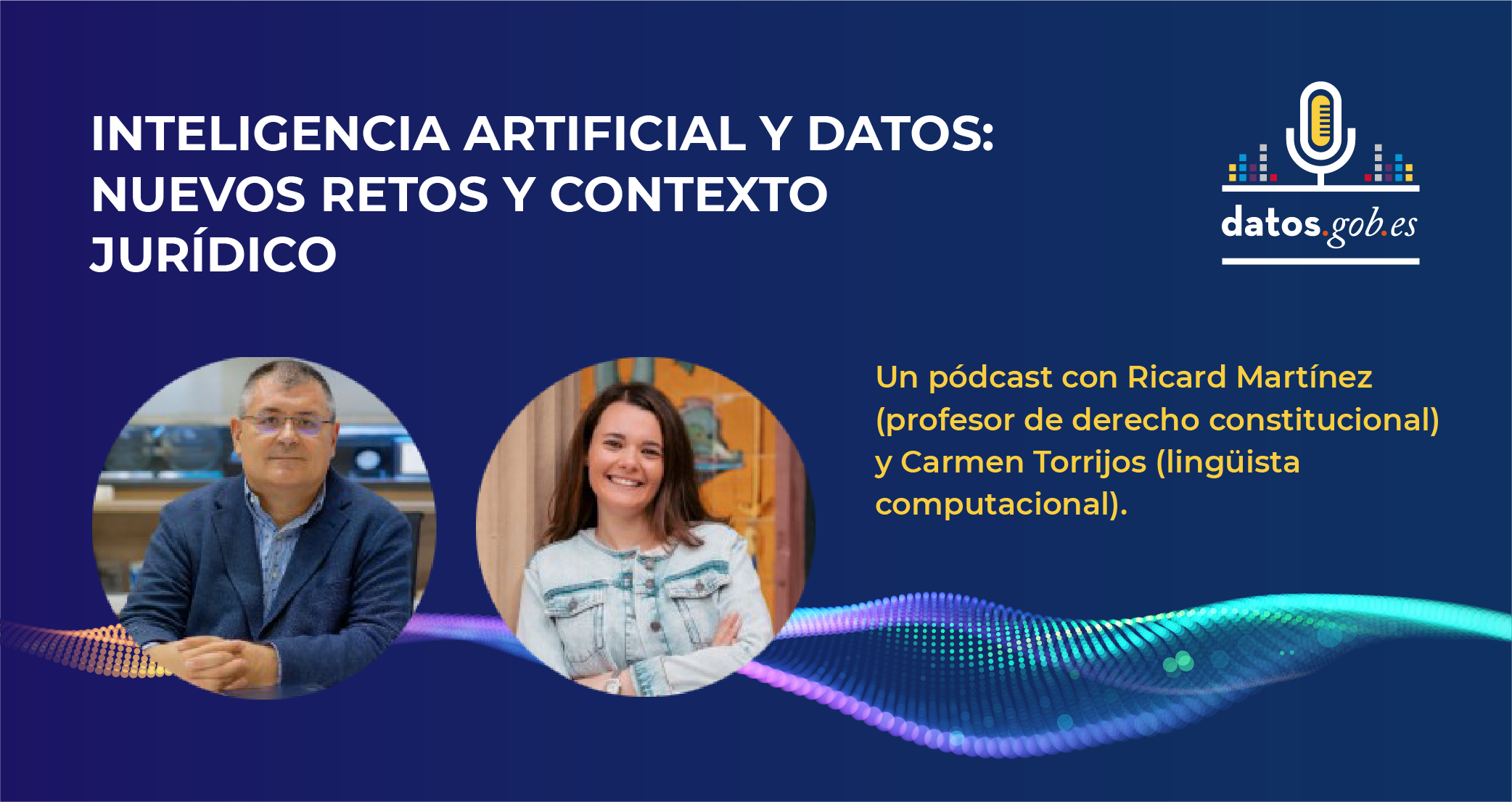
Artificial Intelligence (AI) is no longer a futuristic concept and has become a key tool in our daily lives. From movie or series recommendations on streaming platforms to virtual assistants like Alexa or Google Assistant on our devices, AI is everywhere. But how do you build an AI model? Despite what it might seem, the process is less intimidating if we break it down into clear and understandable steps.
Step 1: Define the problem
Before we start, we need to be very clear about what we want to solve. AI is not a magic wand: different models will work better in different applications and contexts so it is important to define the specific task we want to execute. For example, do we want to predict the sales of a product? Classify emails as spam or non-spam? Having a clear definition of the problem will help us structure the rest of the process.
In addition, we need to consider what kind of data we have and what the expectations are. This includes determining the desired level of accuracy and the constraints of available time or resources.
Step 2: Collect the data
The quality of an AI model depends directly on the quality of the data used to train it. This step consists of collecting and organising the data relevant to our problem. For example, if we want to predict sales, we will need historical data such as prices, promotions or buying patterns.
Data collection starts with identifying relevant sources, which can be internal databases, sensors, surveys... In addition to the company's own data, there is a wide ecosystem of data, both open and proprietary, that can be drawn upon to build more powerful models. For example, the Government of Spain makes available through the datos.gob.es portal multiple sets of open data published by public institutions. On the other hand, Amazon Web Services (AWS) through its AWS Data Exchange portal allows access and subscription to thousands of proprietary datasets published and maintained by different companies and organisations.
The amount of data required must also be considered here. AI models often require large volumes of information to learn effectively. It is also crucial that the data are representative and do not contain biases that could affect the results. For example, if we train a model to predict consumption patterns and only use data from a limited group of people, it is likely that the predictions will not be valid for other groups with different behaviours.
Step 3: Prepare and explore the data
Once the data have been collected, it is time to clean and normalise them. In many cases, raw data may contain problems such as errors, duplications, missing values, inconsistencies or non-standardised formats. For example, you might find empty cells in a sales dataset or dates that do not follow a consistent format. Before feeding the model with this data, it is essential to fit it to ensure that the analysis is accurate and reliable. This step not only improves the quality of the results, but also ensures that the model can correctly interpret the information.
Once the data is clean, it is essential to perform feature engineering (feature engineering), a creative process that can make the difference between a basic model and an excellent one. This phase consists of creating new variables that better capture the nature of the problem we want to solve. For example, if we are analysing onlinesales, in addition to using the direct price of the product, we could create new characteristics such as the price/category_average ratio, the days since the last promotion, or variables that capture the seasonality of sales. Experience shows that well-designed features are often more important for the success of the model than the choice of the algorithm itself.
In this phase, we will also carry out a first exploratory analysis of the data, seeking to familiarise ourselves with the data and detect possible patterns, trends or irregularities that may influence the model. Further details on how to conduct an exploratory data analysis can be found in this guide .
Another typical activity at this stage is to divide the data into training, validation and test sets. For example, if we have 10,000 records, we could use 70% for training, 20% for validation and 10% for testing. This allows the model to learn without overfitting to a specific data set.
To ensure that our evaluation is robust, especially when working with limited datasets, it is advisable to implement cross-validationtechniques. This methodology divides the data into multiple subsets and performs several iterations of training and validation. For example, in a 5-fold cross-validation, we split the data into 5 parts and train 5 times, each time using a different part as the validation set. This gives us a more reliable estimate of the real performance of the model and helps us to detect problems of over-fitting or variability in the results.
Step 4: Select a model
There are multiple types of AI models, and the choice depends on the problem we want to solve. Common examples are regression, decision tree models, clustering models, time series models or neural networks. In general, there are supervised models, unsupervised models and reinforcement learning models. More detail can be found in this post on how machines learn.
When selecting a model, it is important to consider factors such as the nature of the data, the complexity of the problem and the ultimate goal. For example, a simple model such as linear regression may be sufficient for simple, well-structured problems, while neural networks or advanced models might be needed for tasks such as image recognition or natural language processing. In addition, the balance between accuracy, training time and computational resources must also be considered. A more accurate model generally requires more complex configurations, such as more data, deeper neural networks or optimised parameters. Increasing the complexity of the model or working with large datasets can significantly lengthen the time needed to train the model. This can be a problem in environments where decisions must be made quickly or resources are limited and require specialised hardware, such as GPUs or TPUs, and larger amounts of memory and storage.
Today, many open source libraries facilitate the implementation of these models, such as TensorFlow, PyTorch or scikit-learn.
Step 5: Train the model
Training is at the heart of the process. During this stage, we feed the model with training data so that it learns to perform its task. This is achieved by adjusting the parameters of the model to minimise the error between its predictions and the actual results.
Here it is key to constantly evaluate the performance of the model with the validation set and make adjustments if necessary. For example, in a neural network-type model we could test different hyperparameter settings such as learning rate, number of hidden layers and neurons, batch size, number of epochs, or activation function, among others.
Step 6: Evaluate the model
Once trained, it is time to test the model using the test data set we set aside during the training phase. This step is crucial to measure how it performs on data that is new to the model and ensures that it is not "overtrained", i.e. that it not only performs well on training data, but that it is able to apply learning on new data that may be generated on a day-to-day basis.
When evaluating a model, in addition to accuracy, it is also common to consider:
- Confidence in predictions: assess how confident the predictions made are.
- Response speed: time taken by the model to process and generate a prediction.
- Resource efficiency: measure how much memory and computational usage the model requires.
- Adaptability: how well the model can be adjusted to new data or conditions without complete retraining.
Step 7: Deploy and maintain the model
When the model meets our expectations, it is ready to be deployed in a real environment. This could involve integrating the model into an application, automating tasks or generating reports.
However, the work does not end here. The AI needs continuous maintenance to adapt to changes in data or real-world conditions. For example, if buying patterns change due to a new trend, the model will need to be updated.
Building AI models is not an exact science, it is the result of a structured process that combines logic, creativity and perseverance. This is because multiple factors are involved, such as data quality, model design choices and human decisions during optimisation. Although clear methodologies and advanced tools exist, model building requires experimentation, fine-tuning and often an iterative approach to obtain satisfactory results. While each step requires attention to detail, the tools and technologies available today make this challenge accessible to anyone interested in exploring the world of AI.
ANNEX I - Definitions Types of models
-
Regression: supervised techniques that model the relationship between a dependent variable (outcome) and one or more independent variables (predictors). Regression is used to predict continuous values, such as future sales or temperatures, and may include approaches such as linear, logistic or polynomial regression, depending on the complexity of the problem and the relationship between the variables.
-
Decision tree models: supervised methods that represent decisions and their possible consequences in the form of a tree. At each node, a decision is made based on a characteristic of the data, dividing the set into smaller subsets. These models are intuitive and useful for classification and prediction, as they generate clear rules that explain the reasoning behind each decision.
-
Clustering models: unsupervised techniques that group data into subsets called clusters, based on similarities or proximity between the data. For example, customers with similar buying habits can be grouped together to personalise marketing strategies. Models such as k-means or DBSCAN allow useful patterns to be identified without the need for labelled data.
-
Time series models: designed to work with chronologically ordered data, these models analyse temporal patterns and make predictions based on history. They are used in cases such as demand forecasting, financial analysis or meteorology. They incorporate trends, seasonality and relationships between past and future data.
-
Neural networks: models inspired by the workings of the human brain, where layers of artificial neurons process information and detect complex patterns. They are especially useful in tasks such as image recognition, natural language processing and gaming. Neural networks can be simple or deep learning, depending on the problem and the amount of data.
-
Supervised models: these models learn from labelled data, i.e., sets in which each input has a known outcome. The aim is for the model to generalise to predict outcomes in new data. Examples include spam and non-spam mail classification and price predictions.
-
Unsupervised models: twork with unlabelled data, looking for hidden patterns, structures or relationships within the data. They are ideal for exploratory tasks where the expected outcome is not known in advance, such as market segmentation or dimensionality reduction.
- Reinforcement learning model: in this approach, an agent learns by interacting with an environment, making decisions and receiving rewards or penalties based on performance. This type of learning is useful in problems where decisions affect a long-term goal, such as training robots, playing video games or developing investment strategies.
Content prepared by Juan Benavente, senior industrial engineer and expert in technologies linked to the data economy. The contents and points of view reflected in this publication are the sole responsibility of the author.


